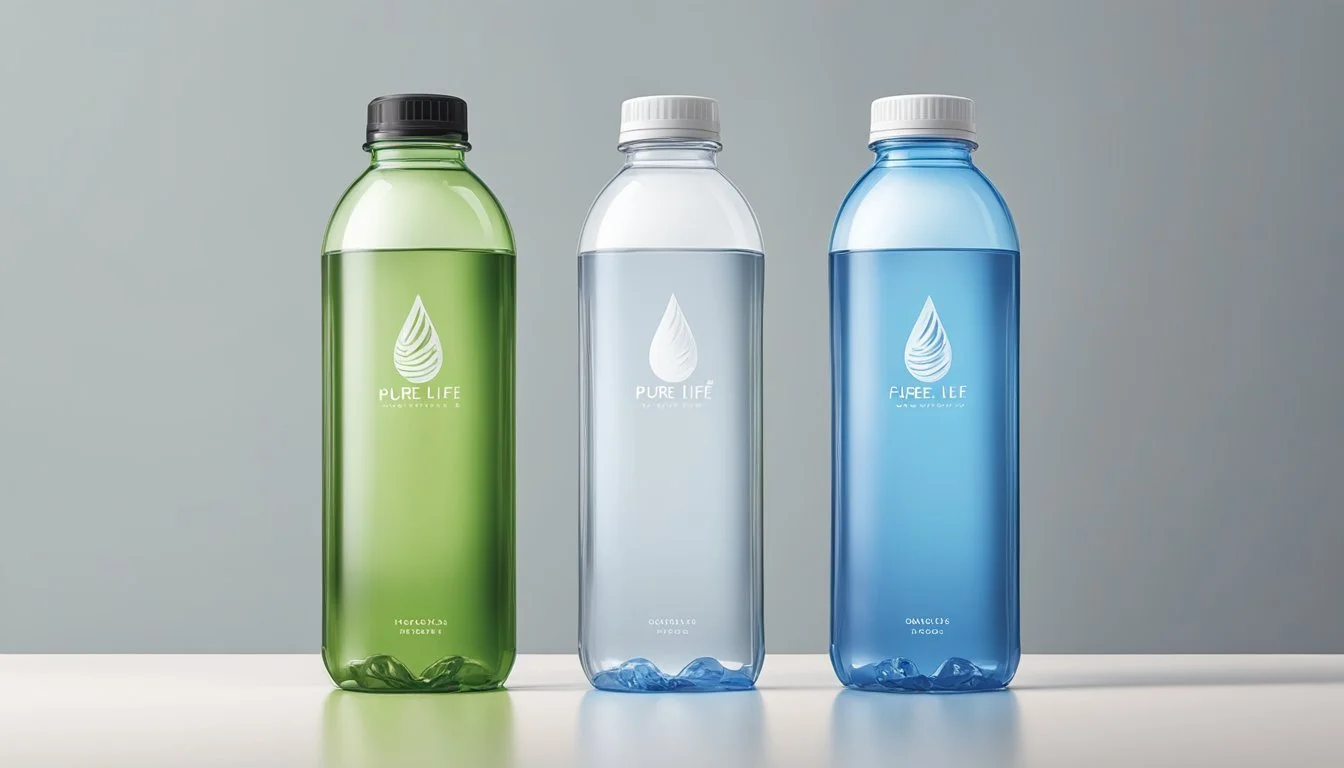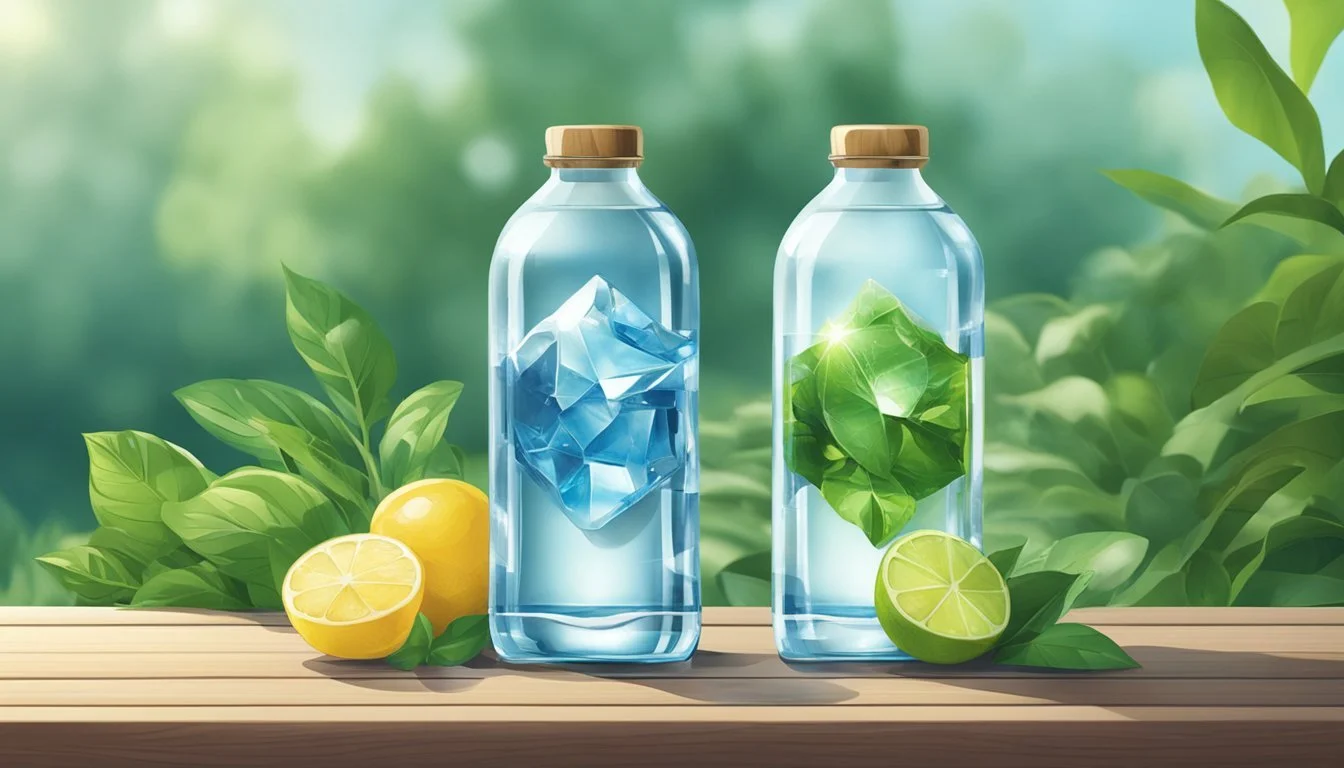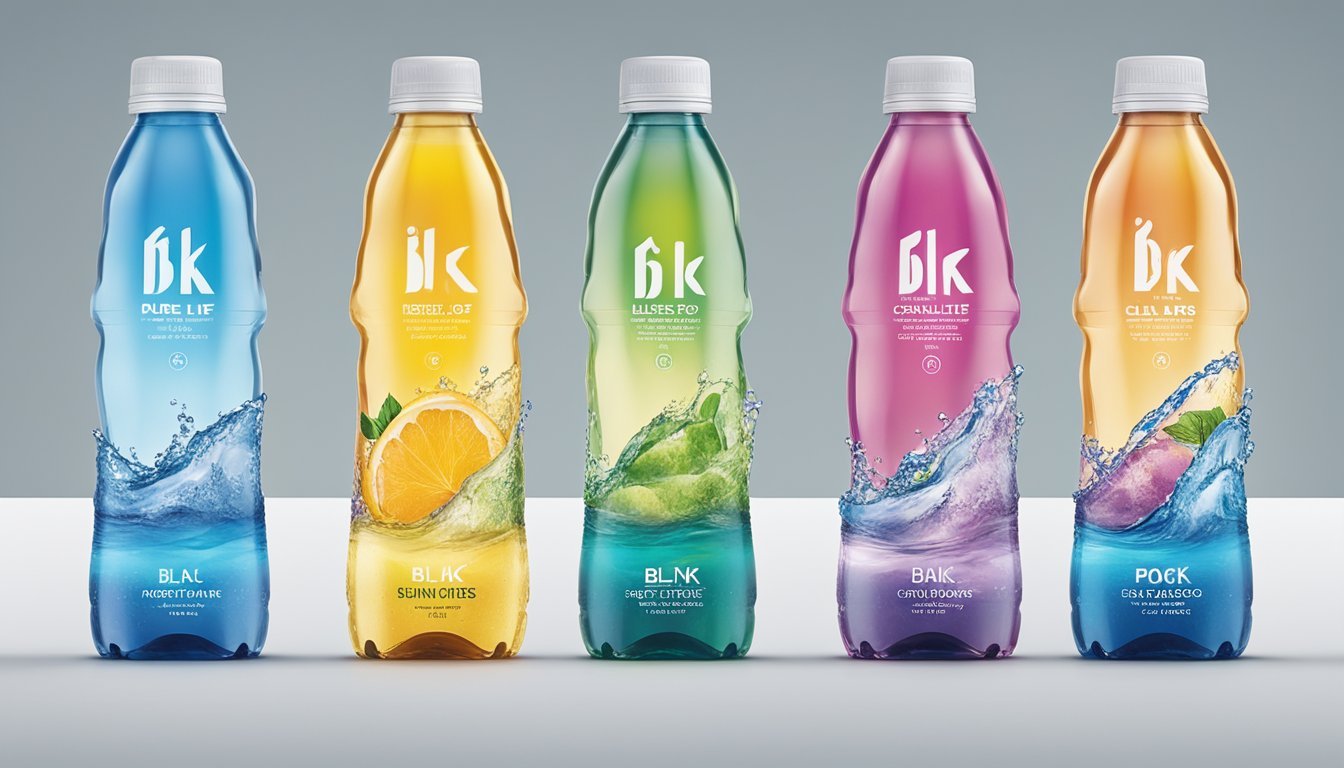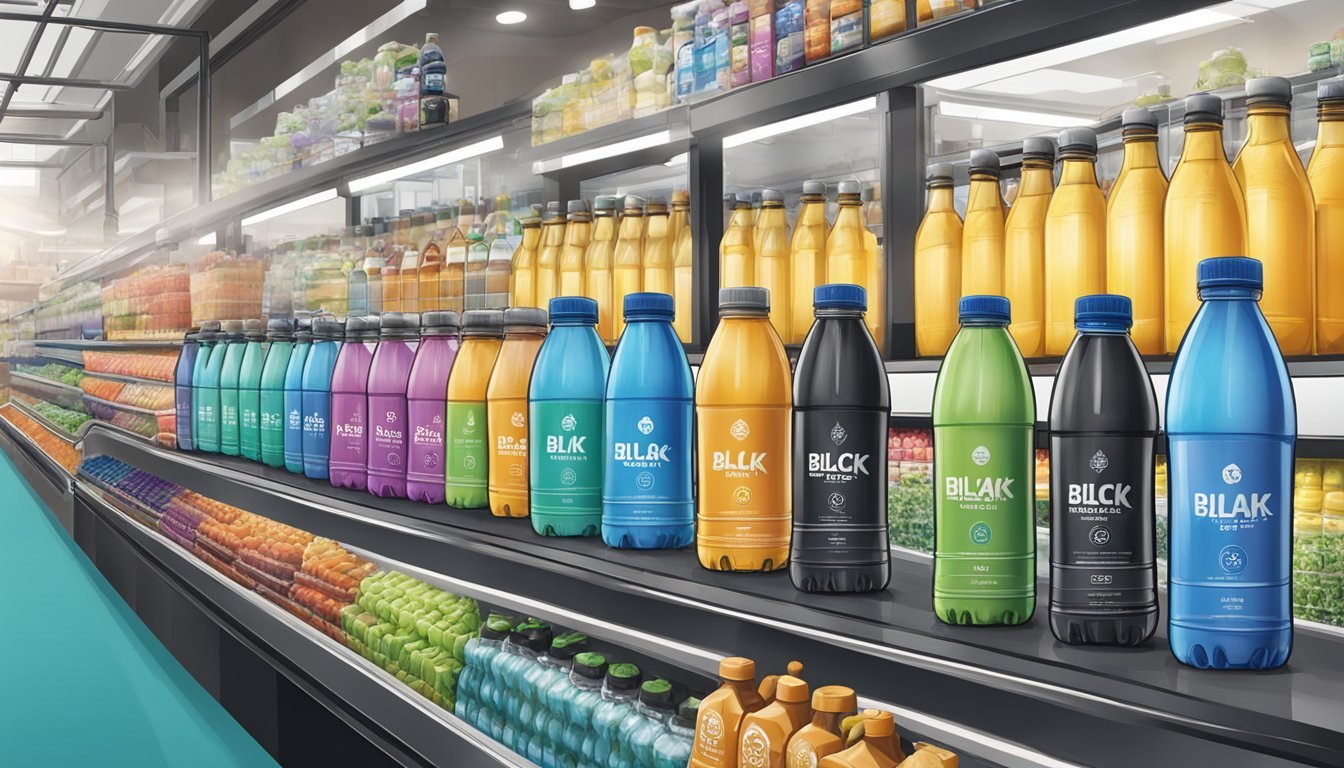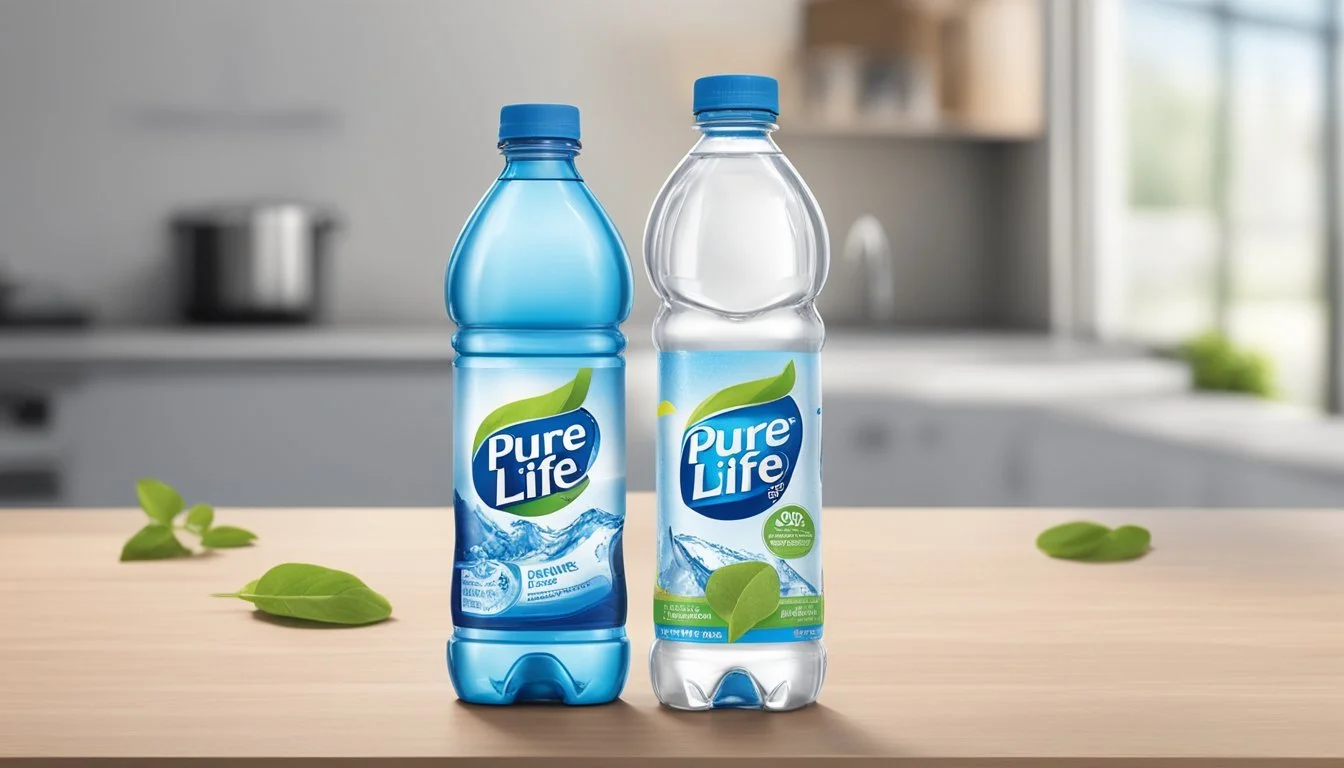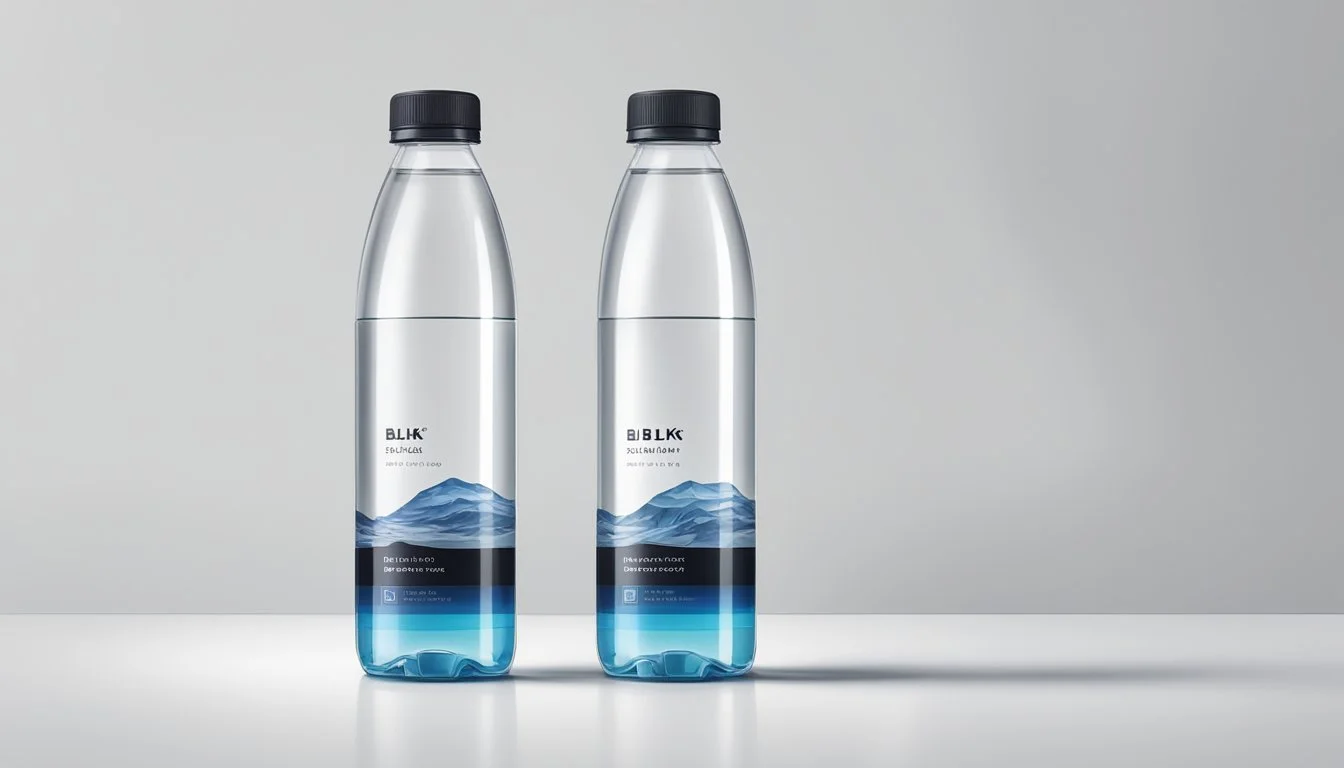Pure Life vs. Blk
Which Bottled Water is Better?
Choosing between Pure Life and Blk bottled water can be a matter of taste, quality, and potential health benefits. Blk water stands out with its distinct black color, which comes from fulvic trace minerals believed to offer various health benefits. This unique attribute has intrigued many health-conscious consumers, making it an intriguing option for those looking to try something different.
Pure Life, on the other hand, offers a more traditional bottled water experience. It's known for its neutral and balanced taste, lacking the added minerals and distinctive flavor of other brands like Dasani. This makes it a dependable choice for those who prefer a straightforward, no-fuss hydration option.
When comparing these two options, potential buyers should consider what they value more: the traditional and widely available Pure Life, or the unconventional and potentially health-boosting Blk. Both have their merits and cater to different preferences and needs.
Analyzing Water Quality and Safety
When comparing Pure Life and Blk bottled water, it is crucial to focus on water quality and safety.
Source:
Pure Life sources its water from municipal supplies, which undergoes rigorous purification. Blk water is sourced from natural springs and is enriched with fulvic and humic minerals.
Filtration and Purification:
Pure Life utilizes reverse osmosis and other filtration techniques to provide purified water. This process helps remove impurities and improve taste.
Both the Environmental Protection Agency (EPA) and the Food and Drug Administration (FDA) regulate bottled water. Pure Life adheres to strict EPA and FDA regulations to ensure safety.
Health and Minerals:
Pure Life is known for being low in minerals due to its purification process, primarily containing purified water. Blk water, on the other hand, is rich in naturally occurring minerals from its sources.
Contaminants:
Consumer Reports reveals that PFAS chemicals were found in some bottled waters, although it's less common in noncarbonated options like Pure Life and Blk. Potential contaminants such as lead, arsenic, and heavy metals are well-monitored and kept within safe limits.
Microplastic Presence:
Both brands are subject to testing for microplastics, though no significant issues have been reported.
Using this clear information on safety and quality, individuals can make informed choices between Pure Life and Blk bottled water.
The Taste Test
When it comes to bottled water, taste is a crucial factor in customer preference.
Nestlé Pure Life is known for its neutral and balanced taste. This is achieved by the purification process it undergoes, which ensures the removal of impurities. Its taste is often described as clean and lacking strong mineral notes, which appeals to many consumers looking for straightforward hydration.
Blk, on the other hand, offers a distinct taste experience. This water is infused with fulvic minerals, giving it a unique profile. The presence of these minerals can impart a slight earthy flavor, setting it apart from the neutral profiles that many other bottled waters offer.
A blind taste test of the two brands reveals:
Attribute Nestlé Pure Life Blk Flavor Clean, neutral Slightly earthy Mineral Content Low Infused with fulvic minerals Aftertaste Minimal Noticeable
Nestlé Pure Life appeals to those who prefer a traditional water taste without any additional notes. It’s reliable for its lack of aftertaste and consistent neutral flavor.
Blk, with its fulvic minerals, provides a different experience. The mineral infusion results in a taste that some may find intriguing yet polarizing. Mineral content adds complexity that may be appreciated by those seeking more from their bottled water.
Understanding the Source
When choosing between Pure Life and Blk bottled water, understanding their sources is essential. Each brand offers different sourcing and processing methods, impacting taste and quality. This section provides insights into how these waters are derived.
Natural Sources and Spring Water
Pure Life often sources its water from municipal sources and well water. This water undergoes extensive purification processes to ensure its quality.
Blk, on the other hand, boasts of its natural extraction from ancient volcanic rock and groundwater. This extraction method helps retain minerals from deep within the Earth, such as fulvic acid, known for its potential health benefits.
Pure Life:
Sources: Municipal sources, well water
Quality: Extensive purification, mineral blending for taste
Blk:
Sources: Volcanic rock, natural spring water
Quality: Contains fulvic trace minerals, minimal processing
Processed and Purified Options
Pure Life water follows a stringent multi-step process. It is first collected from its source, then distilled and purified. This ensures contaminants are removed. Added minerals enhance taste.
Blk takes a more minimalistic approach to processing. The water, enriched with fulvic acid from volcanic sources, maintains its natural minerals. This drink's deep hue reflects its natural origins.
Pure Life:
Process: Collection, distillation, purification, mineral addition
Focus: Ensuring safety and taste through extensive methods
Blk:
Process: Minimal processing, natural enrichment
Focus: Preserving natural minerals and distinct appearance
Their sourcing and processing methods offer consumers unique options based on their preferences for purity, mineral content, and natural extraction techniques.
Nutritional Comparison
When comparing the nutritional content of Pure Life and blk. water, it is important to focus on the specifics of each brand's mineral content and added elements.
Pure Life:
Produced by Nestlé, Pure Life undergoes a rigorous purification process.
Contains added minerals for taste, including magnesium, calcium, and potassium.
Electrolyte levels are balanced to enhance hydration.
A trace amount of salt may be present to improve taste.
blk. Water:
Known for its distinctive black color, due to the addition of fulvic acid.
Contains over 77 trace minerals and electrolytes.
Naturally mineral-rich and does not have added minerals.
Prominent minerals include magnesium, calcium, and potassium.
Comparison Table
Nutrient Pure Life blk. Water Magnesium Added Naturally occurring Calcium Added Naturally occurring Potassium Added Naturally occurring Electrolytes Balanced High levels Fulvic Acid Not present Present Added Minerals Yes No Salt Trace amount No
Pure Life focuses on adding specific minerals to achieve a balanced taste and promote hydration. In contrast, blk. water derives its minerals naturally from fulvic acid and does not add anything during processing.
Both waters provide essential electrolytes and minerals but through different approaches. Pure Life enhances taste with added minerals, while blk. water emphasizes its natural, mineral-rich composition.
Environmental Impact and Sustainability
When evaluating bottled water brands like Pure Life and Blk, environmental impact and sustainability are crucial factors.
Plastic bottles are a significant concern. Pure Life primarily uses PET plastic, which can contribute to plastic waste if not recycled. Meanwhile, Blk's recent initiatives focus on incorporating more recycled plastic into their packaging.
The environmental footprint of these brands also varies. Pure Life sources water from groundwater and is working on reducing its eco-friendly bottling practices. Blk, on the other hand, is noted for its sustainable water sourcing practices, which include efforts to minimize depletion of natural water sources.
Blatant differences exist in their approaches to plastic waste. Pure Life emphasizes the importance of recycling programs to ensure that plastic bottles are reused, but the effectiveness is contingent on consumer participation. Blk is investing in biodegradable alternatives to decrease dependency on conventional plastics.
Efforts towards eco-friendly packaging are evident in both brands. Pure Life has made strides by reducing the amount of plastic used per bottle. Blk’s commitment is reflected in trialing innovative materials that have a lower environmental footprint.
Throughout their operations, both brands are navigating the delicate balance between providing convenient bottled water solutions and addressing the heavy environmental impact of their products.
Packaging and Brand Experience
Both Pure Life and Blk offer unique packaging and branding experiences that reflect their brand values. This section will examine the specifics behind each brand's bottle design, materials, labeling, and transparency.
Bottle Design and Materials
Pure Life bottles adhere to a conventional design suited for portability and ease of use. The bottles are typically made from BPA-free plastic, ensuring safety for consumers and promoting health consciousness. The standard, clear, cylindrical design makes it easy to see the water inside, contributing to an overall perception of purity and cleanliness.
Blk water stands out with its unconventional design. The bottles are typically black, reflecting the unique black water inside, which is infused with fulvic minerals. The aesthetic is modern and sleek, designed to attract health-conscious individuals looking for a trendy alternative. Blk bottles are also made from BPA-free plastic, aligning with consumer expectations for safe and sustainable packaging.
Labeling and Transparency
Pure Life emphasizes clarity and transparency in its labels. The information provided is straightforward, listing the filtration processes and certifications that ensure the water’s purity. This transparency builds trust with consumers interested in knowing the source and treatment of their bottled water. The labels maintain a clean and professional look, reflecting the brand’s dedication to quality.
Blk presents a different approach with its labeling. The dark bottles feature minimalist and striking labels that contrast sharply with the black water. The labels highlight the benefits of the added fulvic minerals and the brand’s unique selling points. Although the dark color might limit transparency in seeing the water itself, the labels focus on providing key information about the health benefits and origins of the product, catering to a niche market looking for innovation in hydration.
Market and Brand Overview
Pure Life and Blk are two distinct players in the bottled water industry, each targeting different segments of the market. Pure Life focuses on mass-market accessibility, while Blk offers a niche product with unique features.
Industry Leaders and Alternatives
In the bottled water market, several brands dominate due to their widespread availability and consistent quality. Nestlé’s Pure Life is a major player known for its affordability and large-scale distribution. Other prominent brands include Dasani and Aquafina, owned by Coca-Cola and PepsiCo, respectively, which leverage their massive distribution networks to reach a broad audience.
Brands like Fiji, Evian, Smartwater, Essentia, and Voss are also popular, offering various types of water such as spring, mineral, and vapor-distilled. These brands often emphasize purity, taste, and health benefits, appealing to health-conscious consumers.
Niche and Luxury Brands
Niche and luxury bottled water brands cater to specific demographics looking for something beyond basic hydration. Blk stands out with its unique selling point – water infused with fulvic acid, giving it a distinctive black color. This appeals to consumers interested in wellness trends and premium products.
Other luxury brands include Fiji and Evian, which market themselves based on the pristine sources of their water. Smartwater and Essentia offer enhanced hydration through added electrolytes and alkaline properties. These brands target upscale markets and are often seen in high-end retail locations and hospitality settings.
Niche brands often emphasize unique sources or added benefits, tapping into the growing market for specialized and premium water products.
Comparing Manufacturing Processes
Pure Life and Blk use distinct manufacturing processes to ensure their water meets quality and safety standards.
Pure Life relies on several filtration and purification steps. The water often undergoes reverse osmosis, which helps remove impurities and minerals. Following this, it goes through additional ultraviolet light treatment to ensure microbial safety.
Processing methods for Pure Life focus on achieving a neutral taste. Key steps include:
Reverse Osmosis
Ultraviolet Light Treatment
Possibly adding minerals for taste consistency
Blk, on the other hand, is known for its unique incorporation of fulvic minerals, giving it a black appearance. The manufacturing process for Blk typically includes:
Sourcing natural spring or purified water
Blending fulvic minerals for additional nutrients
Blk does not follow traditional purification methods like reverse osmosis or ultraviolet light. Their process emphasizes maintaining the integrity of added minerals. This results in a distinct appearance and nutritional profile.
Comparison Table:
Aspect Pure Life Blk Filtration Process Reverse Osmosis, Ultraviolet Light Not specified Purification Process Multi-step involving UV light Incorporation of fulvic minerals Key Features Neutral taste, Safety through multiple stages Distinct black color, Added nutrients
Both brands prioritize safety and quality but differ significantly in their approach and final product characteristics.
Health Benefits and Concerns
Both Nestlé Pure Life and blk. Water offer distinct health benefits and potential concerns for consumers.
Nestlé Pure Life focuses on hydration through purified bottled water, often enhanced with added minerals. This can help ensure consistent intake of essential electrolytes, which can be beneficial for maintaining fluid balance and supporting overall health.
On the other hand, blk. Water stands out due to its fulvic acid content. Fulvic acid is a natural compound reported to have various health benefits, mainly linked to its potential to enhance nutrient absorption. Additionally, blk. Water claims to have a unique mineral profile due to this infusion.
Alkalinity is another point of consideration. Pure Life typically maintains a neutral pH, aiming to closely mimic the pH of natural water. blk. Water, infused with fulvic minerals, potentially offers a different pH level, which some argue might help with acid-base balance in the body.
To provide a clearer comparison:
Feature Nestlé Pure Life blk. Water Hydration Reliable source of hydration Adequate hydration Minerals Added minerals Infused with fulvic minerals Electrolytes Contains electrolytes Contains fulvic minerals Alkalinity Neutral pH Variable pH due to fulvic acid
Considering these factors can help consumers make informed choices about which bottled water brand may best suit their health needs and preferences.
Convenience and Accessibility
When comparing Pure Life and Blk bottled water, both brands offer unique aspects of convenience and accessibility.
Pure Life is widely available across the United States. It is often sold in various sizes, from small single-serve bottles to large packs, making it an option for both individual use and bulk purchasing. This brand is frequently found in grocery stores, gas stations, and vending machines.
Blk water, known for its distinct black color due to mineral content, is also accessible but tends to be more niche. It is available in health food stores and online platforms, making it slightly less ubiquitous than Pure Life. Blk often comes in standard bottle sizes, focusing on a specific market of health enthusiasts.
Availability Comparison
Feature Pure Life Blk Distribution Nationwide Select stores, online Bottle Sizes Multiple (e.g., 16.9 oz, packs) Standard, fewer variations Purchase Points Grocery stores, gas stations, vending machines Health food stores, online
Ease of Use: Pure Life bottles are designed for easy handling and are offered in recyclable plastic. They cater to a broad consumer base, while Blk bottles are also user-friendly but target a specific audience looking for the added benefits of fulvic minerals.
Both brands provide convenience, but Pure Life's widespread availability gives it a slight edge in terms of accessibility.
Comparative Analysis of pH Levels and Alkalinity
Pure Life and Blk offer different characteristics regarding pH levels and alkalinity.
Pure Life generally has a neutral pH level around 7. This positions it as a mass-market option with accessible pricing. It's suitable for those who prefer a balanced, neutral water without strong acidic or alkaline properties.
Blk Water infuses fulvic acid minerals, which contribute to its dark color and purported health benefits. Its pH level can be less predictable, often varying depending on batch and storage conditions.
pH Levels and Alkalinity Comparison
Brand pH Level Notable Features Pure Life ~7 Neutral pH, mass-market, affordable Blk Varies Fulvic acid infusion, unique color
Alkaline water enthusiasts might not prefer Blk for its inconsistent pH.
Pure Life’s stable pH can appeal to consumers seeking consistency.
Both brands offer distinct choices depending on one's pH and alkalinity preferences.
Brand Specifics: Nestlé Pure Life
Nestlé Pure Life is one of Nestlé's most recognized bottled water brands. It aims to provide quality hydration at an affordable price point.
Pure Life is typically sold in larger quantities, which might reduce the cost per bottle for consumers. This can be an attractive option for families or individuals looking to stock up on bottled water.
Pure Life is classified as purified water. Nestlé sources the water from wells and then puts it through a rigorous purification process. This process includes reverse osmosis and distillation to ensure the water meets stringent quality standards.
Nestlé, a major player in the bottled water market, owns 64 different water brands. These include popular names like Perrier and Poland Spring. Pure Life stands out in their portfolio as a widely distributed and accessible option.
Despite its widespread availability, some reviews rank Pure Life as an average offering. The water has faced criticism for containing sodium, artificial sweeteners, and preservatives.
Key Points:
Brand: Nestlé Pure Life
Type: Purified water
Availability: Widely available
Price: Generally affordable, especially in bulk
Purification Process: Reverse osmosis, distillation
Ownership: Nestlé, which owns 64 water brands
Consumers looking for a convenient and reliable bottled water option might find Nestlé Pure Life to be a practical choice.
Brand Specifics: BLK
Blk Water stands out primarily due to its distinctive black color. This unique appearance is derived from its infusion with fulvic minerals, believed to offer various health benefits.
Each bottle of Blk Water contains zero calories, zero sugar, and no artificial sweeteners. Consumers looking for hydration without added sugars and calories may find this appealing.
Pricing for Blk Water places it in the premium segment. A 16-24 oz bottle typically costs between $2-4, making it significantly more expensive than many other bottled water brands. This price premium is often justified by its mineral content and unique aesthetic.
| Component | Information | | --- | --- | | Color | Black (infused with fulvic minerals) | | Calories per Bottle | 0 | | Sugars per Bottle | 0 | | Price Range | $2-4 (16-24 oz) |
Fulvic minerals are central to Blk's marketing. These trace minerals, found in soil and decomposed plant material, are suggested to aid nutrient absorption and improve overall wellness.
Taste reviews of Blk Water vary. Some appreciate its neutral taste with slight earthy undertones, while others find it unusual. The black color can be off-putting for some customers initially.
Blk Water's packaging also adds to its premium feel, with sleek, minimalist bottle designs that attract a niche market segment looking for something different.
More About Pure Life
Cascade Mountain vs Pure Life: Which Bottled Water is Better?
Hawaii Volcanic vs Pure Life: Which Bottled Water is Better?
Hawaiian Springs vs Pure Life: Which Bottled Water is Better?
Icelandic Glacial vs Pure Life: Which Bottled Water is Better?
Nestle Pure Life vs Pure Life: Which Bottled Water is Better?
Pure Life vs Kirkland Signature: Which Bottled Water is Better?
Pure Life vs Whole Foods 365: Which Bottled Water is Better?
Richard's Rainwater vs Pure Life: Which Bottled Water is Better?
Solan de Cabras vs Pure Life: Which Bottled Water is Better?
Talking Rain AQA vs Pure Life: Which Bottled Water is Better?
Whole Foods Italian Still Mineral water vs Pure Life: Which Bottled Water is Better?

